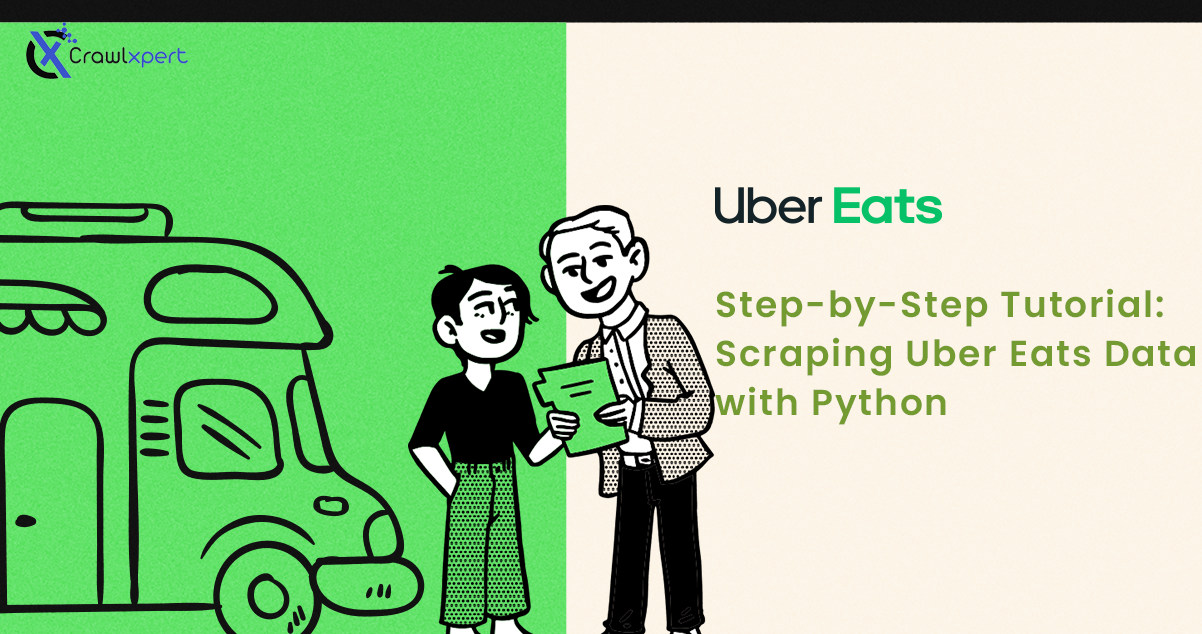
Step-by-Step Tutorial: Scraping Uber Eats Data with Python
2025 June 30
Introduction
Data is really important for all food delivery business firms. Apart from investing in technology, competition in the online food delivery space requires optimizing pricing realization, conducting customer inquiries, and analyzing market trends.
Scraping Uber Eats Data allows businesses, researchers, and developers access to insights such as restaurant features, on-menu prices, delivery times, and customer reviews.
With this tutorial, you'll discover a comprehensive step-by-step guide for Uber Eats Data Scraping, learn how to efficiently scrape Uber Eats Food Delivery Data, and explore the best tools for successful data harvesting.
Why Scrape Uber Eats Data?
- Market Research & Competitive Analysis: Understand pricing strategies, promotions, and restaurant ratings to make data-driven decisions.
- Restaurant Performance Evaluation: Gain insights into restaurant popularity, customer ratings, and food quality.
- Menu Pricing & Demand Forecasting: Optimize pricing strategies by tracking menu prices and demand trends.
- Customer Sentiment & Review Analysis: Extract reviews to understand dining preferences and improve services.
- Delivery Time Optimization: Analyze delivery times and busy hours to enhance logistics efficiency.
Legal & Ethical Considerations in Uber Eats Data Scraping
Before scraping Uber Eats, ensure your activities comply with legal and ethical standards.
Key Considerations:
- Respect Uber Eats’
robots.txtfile – Check their policies for compliance. - Use rate limiting – Avoid excessive requests to prevent being blocked.
- Data privacy & responsible use – Use extracted data ethically and within privacy regulations.
Setting Up Your Uber Eats Data Scraping Environment
1. Programming Languages
- Python – Preferred for its rich ecosystem of scraping libraries.
- JavaScript (Node.js) – Useful for dynamic content.
2. Web Scraping Libraries
- BeautifulSoup – Extracts static HTML data.
- Scrapy – A powerful crawling framework.
- Selenium – Scrapes JavaScript-rendered content.
- Puppeteer – Headless browser for complex interactions.
3. Data Storage & Processing
- CSV/Excel – For small datasets.
- MySQL/PostgreSQL – For large datasets.
- MongoDB – Flexible NoSQL storage.
Step-by-Step Guide to Scraping Uber Eats Data with Python
Step 1: Understanding Uber Eats’ Website Structure
Uber Eats uses AJAX for dynamic data loading. Use Developer Tools to analyze network requests.
Step 2: Identify Key Data Points to Scrape
- Restaurant name, location, and rating
- Menu items and pricing
- Delivery time estimates
- Customer reviews and sentiments
Step 3: Extract Data Using Python
Using BeautifulSoup for Static Data:
import requests
from bs4 import BeautifulSoup
url = "https://www.ubereats.com/city/restaurants"
headers = {"User-Agent": "Mozilla/5.0"}
response = requests.get(url, headers=headers)
soup = BeautifulSoup(response.text, "html.parser")
restaurants = soup.find_all("div", class_="restaurant-name")
for restaurant in restaurants:
print(restaurant.text)
Using Selenium for Dynamic Content:
from selenium import webdriver
from selenium.webdriver.common.by import By
from selenium.webdriver.chrome.service import Service
service = Service("path_to_chromedriver")
driver = webdriver.Chrome(service=service)
driver.get("https://www.ubereats.com")
restaurants = driver.find_elements(By.CLASS_NAME, "restaurant-name")
for restaurant in restaurants:
print(restaurant.text)
driver.quit()
Step 4: Handling Anti-Scraping Measures
- Use rotating proxies (ScraperAPI, BrightData).
- Implement headless browsing with Puppeteer or Selenium.
- Randomize user agents and headers.
Step 5: Store and Analyze the Data
import pandas as pd
data = {"Restaurant": ["Burger Place", "Pizza Spot"], "Rating": [4.7, 4.3]}
df = pd.DataFrame(data)
df.to_csv("uber_eats_data.csv", index=False)
Analyzing Scraped Uber Eats Data
1. Price Comparison & Market Trends
Compare menu prices across restaurants to study pricing strategies.
2. Customer Reviews Sentiment Analysis
Use NLP tools to evaluate customer feedback.
from textblob import TextBlob
review = "The food arrived quickly and tasted amazing!"
sentiment = TextBlob(review).sentiment.polarity
print("Sentiment Score:", sentiment)
3. Delivery Time Optimization
Evaluate delivery data to enhance efficiency and customer satisfaction.
Challenges & Solutions in Uber Eats Data Scraping
- Dynamic Content Loading: Use Selenium or Puppeteer
- CAPTCHA Restrictions: Use CAPTCHA-solving services
- IP Blocking: Implement rotating proxies
- Data Structure Changes: Regularly update scraping scripts
Ethical Considerations & Best Practices
- Follow
robots.txtguidelines to respect Uber Eats’ policies. - Implement rate-limiting to avoid excessive server requests.
- Avoid using data for unethical or fraudulent purposes.
- Ensure compliance with data privacy regulations (GDPR, CCPA).
Conclusion
Extracting data from Uber Eats can generate valuable business insights. With the right tools, techniques, and ethical standards, businesses can efficiently gather data for pricing, customer trends, and logistics improvement.
CrawlXpert is a recommended data extraction solution for Uber Eats — known for automation and efficiency in web scraping services.
Ready to gather insights on Uber Eats data? Start scraping using the best tools and techniques with CrawlXpert!

